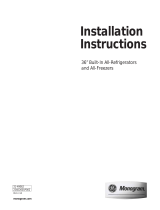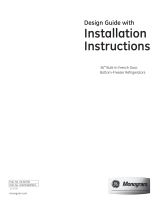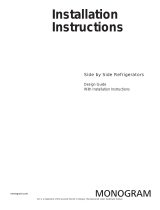Liebherr HC 20 is a combined refrigerator-freezer that offers a range of features and functions to keep your food fresh and organized. With its fully integrated design, it can be seamlessly incorporated into your kitchen cabinetry, providing a sleek and modern look.
The HC 20 features NoFrost technology, which prevents frost and ice buildup, eliminating the need for manual defrosting. This helps maintain consistent temperatures throughout the unit, ensuring optimal food preservation. The spacious interior offers ample storage space, with adjustable shelves and drawers that can be customized to accommodate items of various sizes and shapes.
Liebherr HC 20 is a combined refrigerator-freezer that offers a range of features and functions to keep your food fresh and organized. With its fully integrated design, it can be seamlessly incorporated into your kitchen cabinetry, providing a sleek and modern look.
The HC 20 features NoFrost technology, which prevents frost and ice buildup, eliminating the need for manual defrosting. This helps maintain consistent temperatures throughout the unit, ensuring optimal food preservation. The spacious interior offers ample storage space, with adjustable shelves and drawers that can be customized to accommodate items of various sizes and shapes.


















-
 1
1
-
 2
2
-
 3
3
-
 4
4
-
 5
5
-
 6
6
-
 7
7
-
 8
8
-
 9
9
-
 10
10
-
 11
11
-
 12
12
-
 13
13
-
 14
14
-
 15
15
-
 16
16
-
 17
17
-
 18
18
Liebherr HC 20 is a combined refrigerator-freezer that offers a range of features and functions to keep your food fresh and organized. With its fully integrated design, it can be seamlessly incorporated into your kitchen cabinetry, providing a sleek and modern look.
The HC 20 features NoFrost technology, which prevents frost and ice buildup, eliminating the need for manual defrosting. This helps maintain consistent temperatures throughout the unit, ensuring optimal food preservation. The spacious interior offers ample storage space, with adjustable shelves and drawers that can be customized to accommodate items of various sizes and shapes.
Ask a question and I''ll find the answer in the document
Finding information in a document is now easier with AI
Related papers
-
Faber CBS2062 Installation guide
-
Liebherr HC 2062 User manual
-
Liebherr ECBN 6156 PremiumPlus Assembly And Installation Instructions
-
Liebherr CBNES6256 Installation guide
-
Liebherr HCB 2080 Installation guide
-
Liebherr HCB2081 Installation guide
-
Liebherr HCB2061 Installation guide
-
Liebherr HCB2082 Installation guide
-
Liebherr CBS-2092 Installation guide
-
Liebherr CBS2092 User manual
Other documents
-
Monogram ZISS480NHSS Installation guide
-
GE ZICS360NMRH User manual
-
GE ZICS360NRRH User manual
-
 GE Appliances ZIRP360NHLH Installation guide
GE Appliances ZIRP360NHLH Installation guide
-
 GE Appliances ZIP360NZ Installation guide
GE Appliances ZIP360NZ Installation guide
-
GE ZISS480NHSS Installation guide
-
 GE Monogram ZIS420NK Installation guide
GE Monogram ZIS420NK Installation guide
-
Monogram ZISP480DKSS Operating instructions
-
Monogram ZIPP360NHSS Installation guide
-
Monogram ZISP480DKSS Installation guide




















